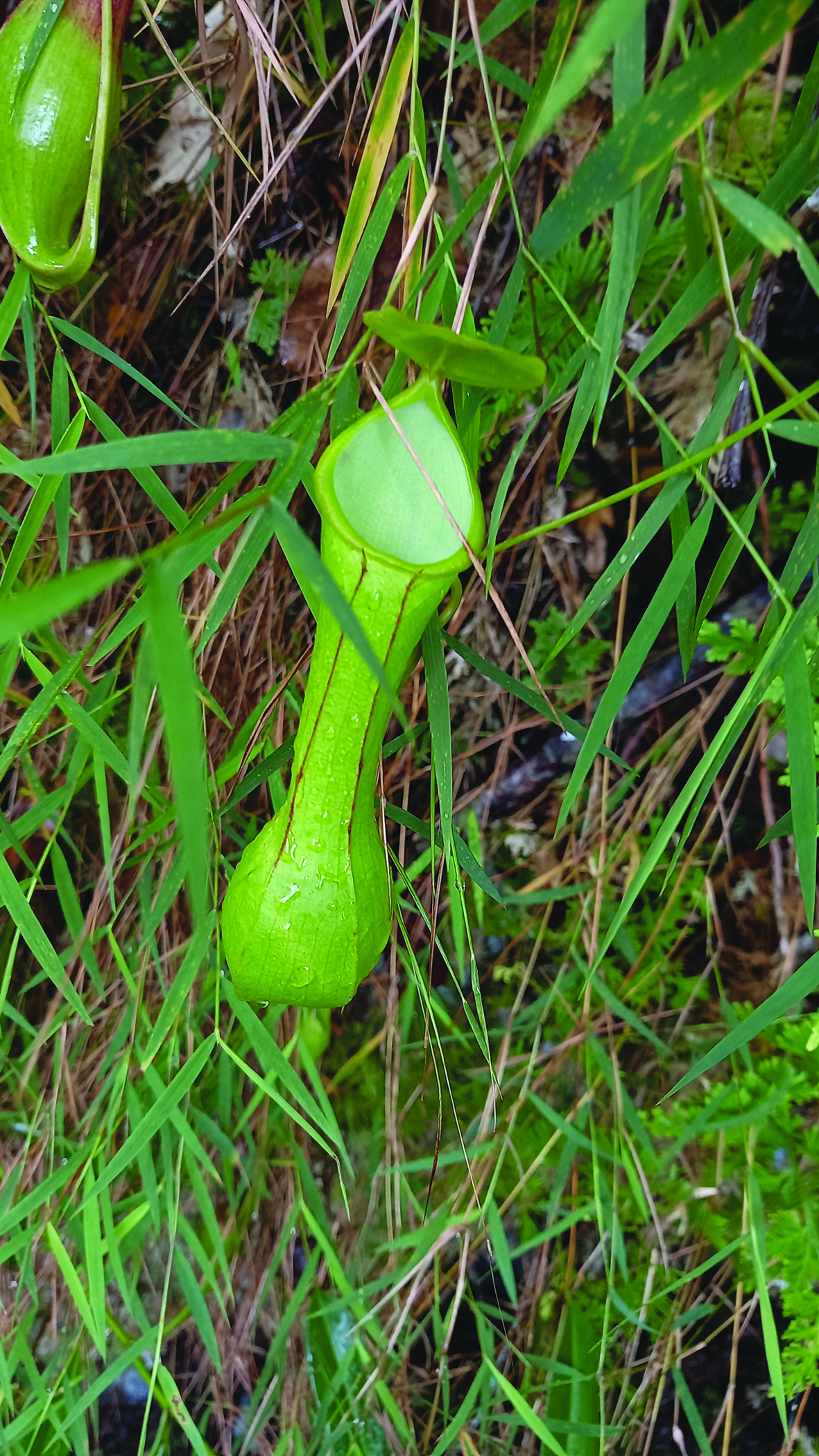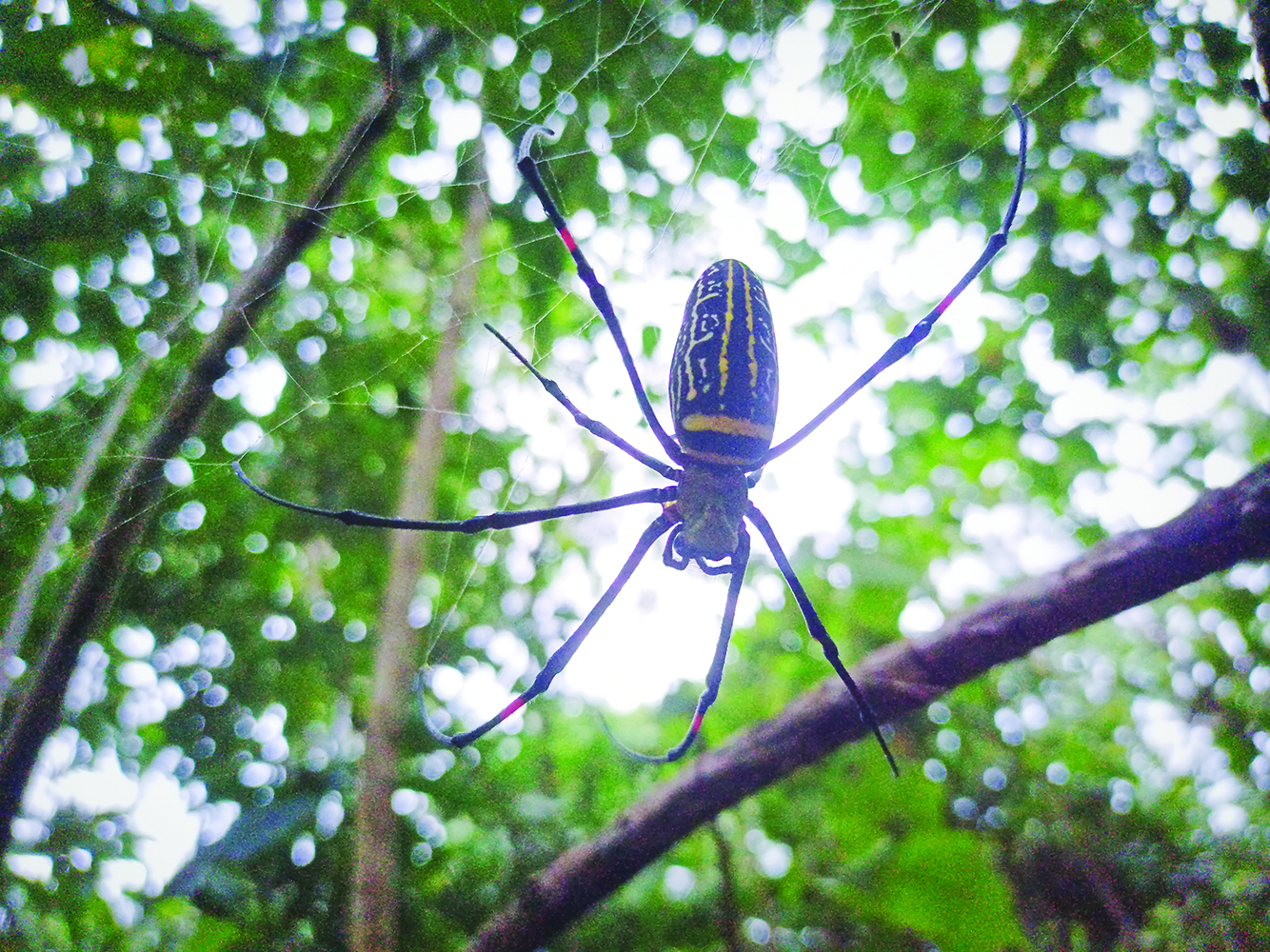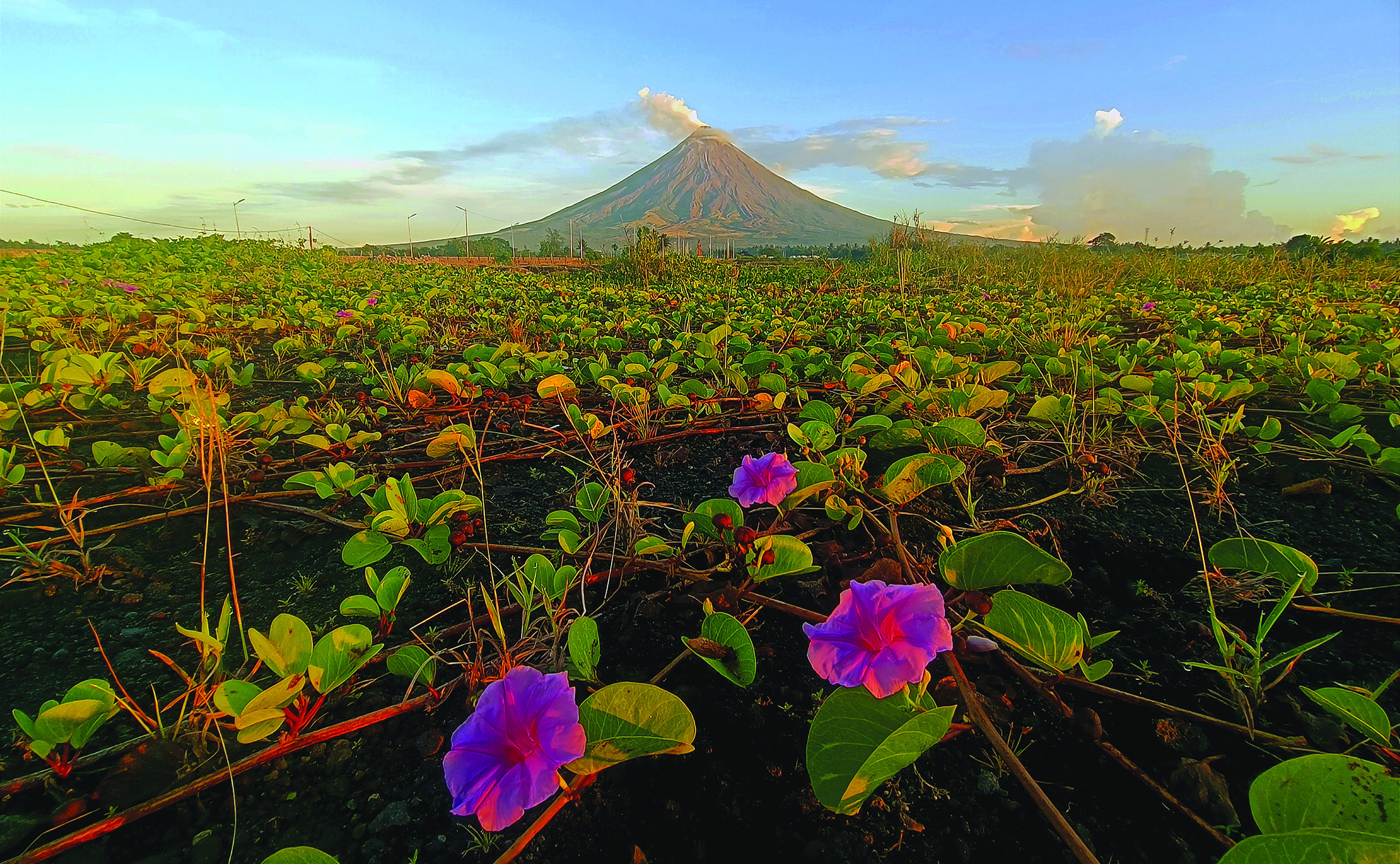Albay’s flora, fauna cling to life amid Mayon fury
(First of two parts)
LEGAZPI CITY — Lifting his gaze and taking a deep breath, Antonio Martillana’s weariness is unmistakable.
From afar, Mt. Mayon looms large over Barangay Budiao, where the 61-year-old Martillana and his family live. The village, located at the foot of Mayon, teems with flora and fauna, both rare and endemic, that are also found on the slopes of the active volcano. But in the past few months, the volcano has been spewing harmful materials from its crater, threatening plants and animals within this protected area in Albay province.
“The daily rumbling noises like the sound of heavy flash floods and the extreme heat of flowing lava would surely drive the animals away from the slopes of the volcano,” Martillana told the Inquirer.
He said they used to encounter big snakes, wild chickens and boars jumping along steep slopes every time the volcano showed signs of restiveness.
Article continues after this advertisementMartillana and other people living in the volcano’s danger zones believe that once wild animals start to retreat from the upper slopes, it could mean that they were trying to escape at the lightest signs of an impending eruption.
Article continues after this advertisementCyrus Job Dela Cruz, a field biologist and a part-time professor at Bicol University’s College of Science in Legazpi City, said the threat of sustained thick lava flow and the pyroclastic density currents (PDC or mixtures of fragmented volcanic particles, hot gases and ash that rush down the volcano’s slopes) deposited along the southeast portion of the volcano likely forced animals to seek refuge in other adjacent and lowland areas.
Amphibians, reptiles, mammals, insects and other animals are sensitive to changes in their environment.
“If the lava reaches the forested area, there will be a possibility of destruction, or the distribution of animals will be scattered. It means that some of them would go to residential areas, and that could lead to human and wildlife conflict,” Dela Cruz said in an online interview on Sept. 18.
Overlapping functions

UNIQUE The pitcher plant (Nepenthes ventricosa) is considered a near-threatened species from the rare family Nepenthaceae. Found on the slopes of Mt. Mayon, it is considered unique for its ability to trap insects and other prey through its pitcher-like leaves. —PHOTO COURTESY OF PROTECTED AREA MANAGEMENT OF MMNP
Dela Cruz said aside from the possibility of poaching, there would be a high mortality rate because of the overlapping of functions among animals and competition for food, space, area and survival.
“These wild species need an area for them to forage. If they only had a small spot because of the activity of Mayon, they would compete for space, and some of the animals would have a high mortality rate. An eruption is a different disaster since there’s a possibility of total eradication of the population because an explosive one would kill them,” he added.
Unlike during typhoons, some plants that are not uprooted and still have seeds left may regrow, but during a volcanic eruption, even animals cannot survive a direct impact.But according to Dela Cruz, there have been no studies conducted yet on the behavior of animals during the Mayon eruption.
Jeffrey Jaymes Mesias, a bird watcher and biologist based in Albay, said some wildlife, like birds, could detect abnormalities in the environment or predict upcoming natural calamities, hence, they immediately escape by migrating to other safe habitats.
“Most likely, the birds on Mayon have adapted since an eruption is a natural calamity, although it’s given that there are casualties and a partial decline in population, [but] as long as there’s no anthropogenic activities that will contribute negative impacts to the current status of the volcano, the biodiversity in it can recover by itself through time,” Mesias said.
Some bird species like “maya” (Oriolus steerii) and “bulbul” (Hypsipetes philippinus) have the capacity to thrive in highly urbanized areas, but other types may not survive if they relocate to other habitats.
“Birds like the Philippine eagle (Pithecophaga jefferyi) require a large area of around 4,000 to 11,000 hectares as their territory, so if almost 50 percent of their new habitat is disturbed, there will be a decline in the population of prey, and they will experience a scarcity of food that may result in death,” Mesias added.
A large portion of the volcano is part of the Mt. Mayon Natural Park (MMNP), declared a protected area under Republic Act No. 11038, or the Expanded National Integrated Protected Areas System Act of 2018.
Protected area

WEAVER Golden orb-weaver (Nephila pilipes) is a red-legged spider considered a “least concern” species. This type of arachnid can weave a strong web used in trapping insects as prey. —PHOTO COURTESY OF PROTECTED AREA MANAGEMENT OF MMNP
The 5,327.15-ha protected area straddles nine localities in Albay—the cities of Legazpi, Ligao and Tabaco; and the towns of Daraga, Camalig, Guinobatan, Malilipot, Bacacay, and Sto. Domingo.
In 2015, it was included in the tentative list of nominees for World Heritage sites by the United Nations Educational, Scientific and Cultural Organization (Unesco) for its conservation and protection of biological diversity.
Renowned for its perfect cone, Mayon is home to threatened species, plants and other wildlife, including 156 floral species belonging to 36 families and 83 species of trees, and ethnobotanical plant biodiversity composed of 71 woody species belonging to 49 genera and 33 families, according to the Unesco website.
Among the species were a single dipterocarp (Hopea philippinensis) found in the area and one near-threatened species from the rare family Nepenthaceae, the pitcher plant (Nepenthes ventricosa).Joel Perillo, the protected area superintendent of MMNP, said in an interview on Sept. 16 that they were closely monitoring the hour-glass-shaped pitcher plants, the most unique species along MMNP for being carnivorous, as they secrete acids and enzymes that help facilitate the digestion of the prey.
Close monitoring

BIODIVERSITY MONITORING Protected area personnel from the Provincial Environment and Natural Resources Office in Albay conduct biodiversity monitoring at Barangay Lidong in Sto. Domingo, Albay, during the first quarter of 2023. The quarterly monitoring was suspended due to the unrest of Mayon Volcano starting June.
“In the whole province of Albay, it can only be seen at MMNP, you cannot see the same in other mountains here. But other regions also have different subspecies,” Perillo said.
MMNP is also a habitat for 104 species of land vertebrates, including 57 species of birds, 10 species of amphibians, 24 species of reptiles and 13 species of mammals.
Of the 13 mammal species, seven are endemic, with three listed as vulnerable: the Philippine brown deer (Rusa marianna), Philippine warty pig (Sus philippensis) and giant golden-crowned flying fox (Acerodon jubatus).
It hosts 37 endemic species of birds with three species listed in the International Union for Conservation of Nature (IUCN) red list: the nearly threatened Luzon bleeding-heart (Gallicolumba luzonica), vulnerable Philippine eagle-owl (Bubo philippensis) and the critically endangered Philippine cockatoo (Cacatua haematuropygia).
Four endemic frog species were also included in the IUCN red list: the nearly threatened Luzon fanged frog (Limnonectes macrocephalus), Luzon forest frog (Platymantis luzonensis) and Guenther’s forest frog (Platymantis guentheri) and the vulnerable banded pygmy tree frog (Platymantis pygmaeus).
The protected area covers an area of at least first 4 kilometers from the crater, with the widest scope in Sto. Domingo, which is up to about 7.5 km. Some adjacent areas of the volcano are privately owned and on ordinary timberland.The Biodiversity Monitoring System (BMS) of the Provincial Environment and Natural Resources Office Albay for the first quarter of 2023 recorded 46 plant species, with 21 identified as priority species and 11 endemic; and 19 animal species, with 10 endemic, at the identified stations and monitoring sites in Barangay Lidong in Sto. Domingo and Barangay Buang in Tabaco City.
In that monitoring, the BMS team noticed an increase in the number of pitcher plants, giant ferns and avian priority species. There were also new sightings of some endemic species, such as Rufous-crowned bee-eater (Merops americanus), pygmy swiftlet (Collocalia troglodytes), Philippine pied fantail (Rhipidura nigritorquis) and Philippine cuckoo-dove (Macropygia tenuirostris). INQ
(Editor’s Note: This story has been produced through support from USAID SIBOL, in partnership with AYEJ, under the Green Beat Plus biodiversity journalism training program. The content and publication of the report are the sole responsibility of the author and the publisher.)
